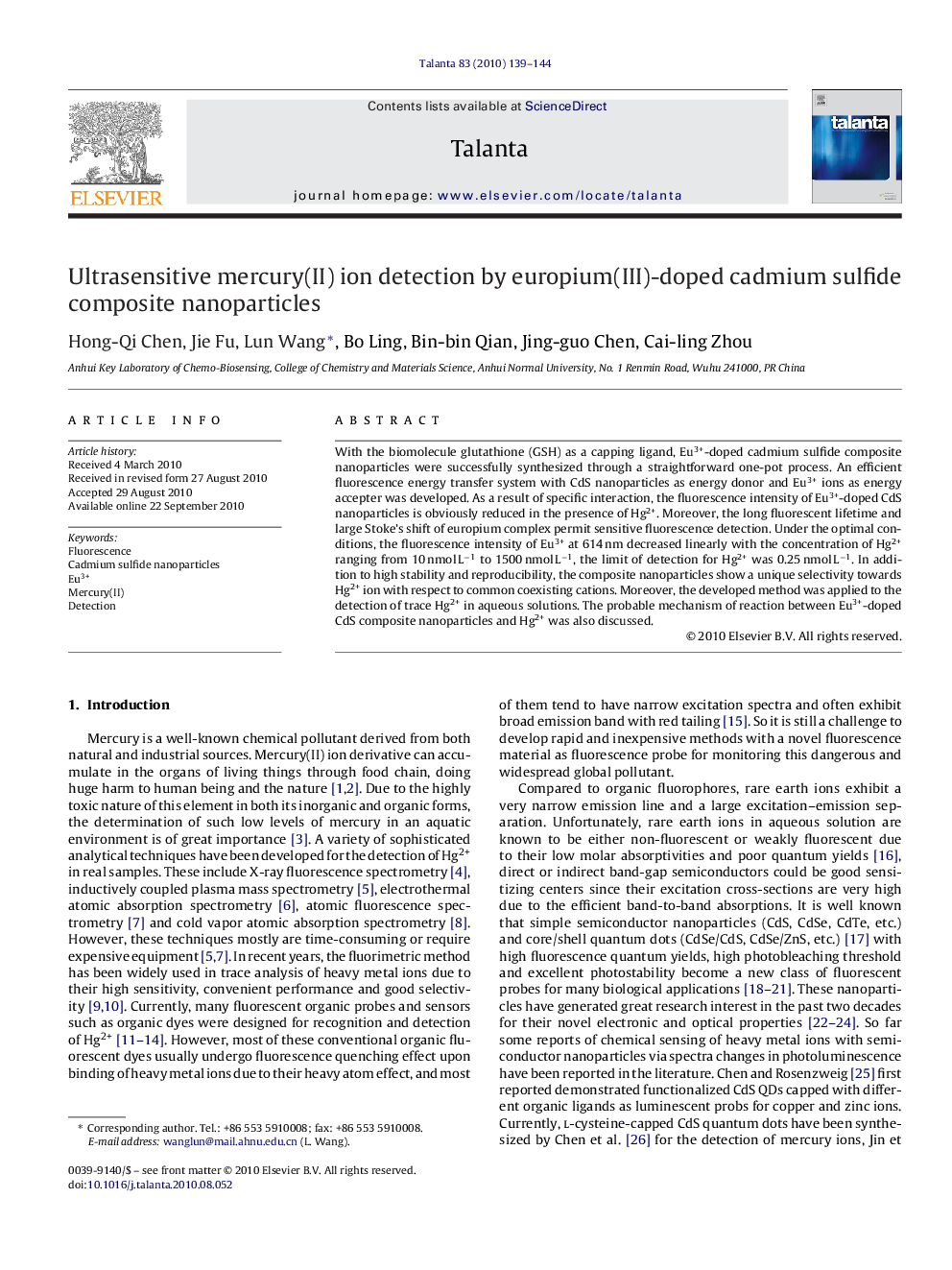| Article ID | Journal | Published Year | Pages | File Type |
|---|---|---|---|---|
| 1242471 | Talanta | 2010 | 6 Pages |
With the biomolecule glutathione (GSH) as a capping ligand, Eu3+-doped cadmium sulfide composite nanoparticles were successfully synthesized through a straightforward one-pot process. An efficient fluorescence energy transfer system with CdS nanoparticles as energy donor and Eu3+ ions as energy accepter was developed. As a result of specific interaction, the fluorescence intensity of Eu3+-doped CdS nanoparticles is obviously reduced in the presence of Hg2+. Moreover, the long fluorescent lifetime and large Stoke's shift of europium complex permit sensitive fluorescence detection. Under the optimal conditions, the fluorescence intensity of Eu3+ at 614 nm decreased linearly with the concentration of Hg2+ ranging from 10 nmol L−1 to 1500 nmol L−1, the limit of detection for Hg2+ was 0.25 nmol L−1. In addition to high stability and reproducibility, the composite nanoparticles show a unique selectivity towards Hg2+ ion with respect to common coexisting cations. Moreover, the developed method was applied to the detection of trace Hg2+ in aqueous solutions. The probable mechanism of reaction between Eu3+-doped CdS composite nanoparticles and Hg2+ was also discussed.
